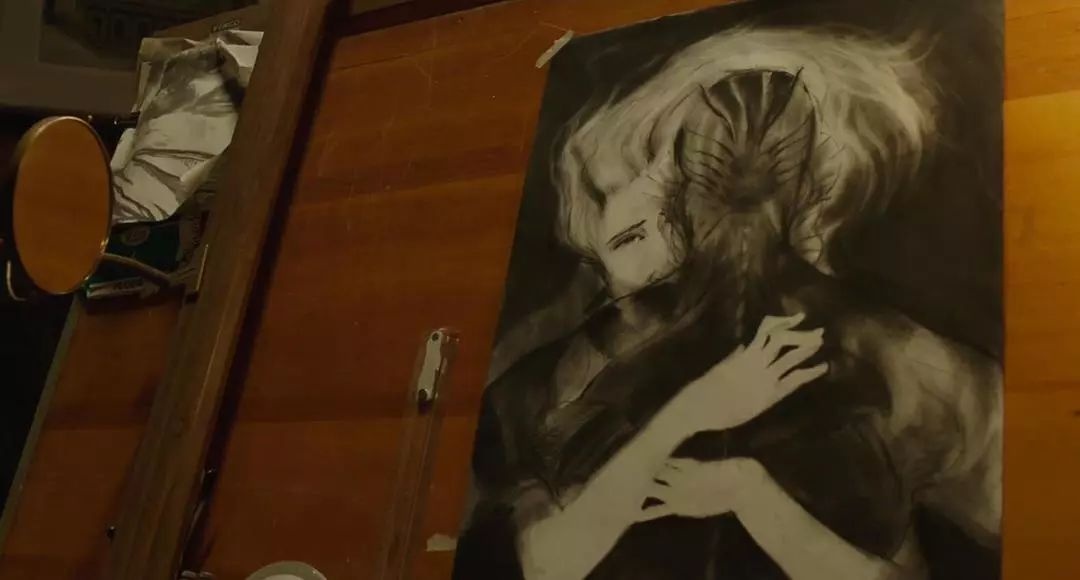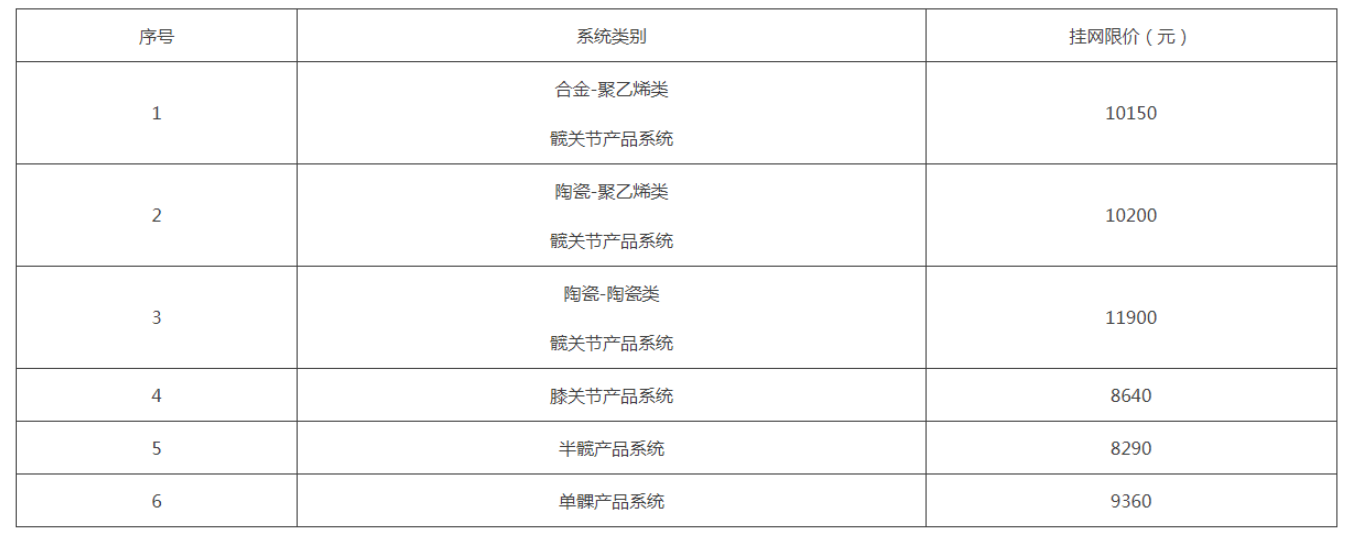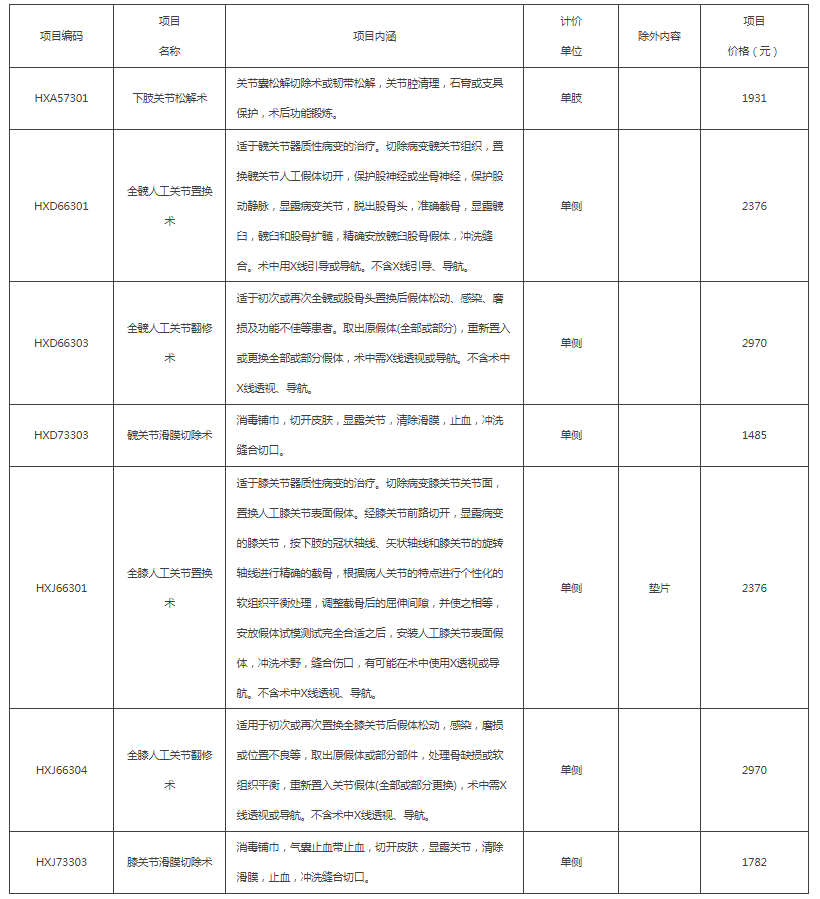Xinhua News Agency, Beijing, January 22nd
People’s Republic of China (PRC) Animal Epidemic Prevention Law
(Adopted at the 26th meeting of the 8th the NPC Standing Committee on July 3, 1997, the first revision was made at the 29th meeting of the 10th the NPC Standing Committee on August 30, 2007, according to the Decision on Amending Twelve Laws, including the Law on the Protection of Cultural Relics in People’s Republic of China (PRC), adopted at the 3rd meeting of the 12th the NPC Standing Committee on June 29, 2013, and the first revision was made in 2015. On April 24th, the 14th meeting of the 12th the NPC Standing Committee, the Decision on Amending Six Laws, including the People’s Republic of China (PRC) Electricity Law, was revised for the second time, and on January 22nd, 2021, the 25th meeting of the 13th the NPC Standing Committee was revised for the second time.
catalogue
Chapter I General Provisions
Chapter II Prevention of Animal Diseases
Chapter III Report, Notification and Publication of Animal Epidemic Situations
Chapter IV Control of Animal Epidemic Diseases
Chapter V Quarantine of Animals and Animal Products
Chapter VI Harmless Treatment of Dead Animals and Diseases Animal Products
Chapter VII Animal Diagnosis and Treatment
Chapter VIII Veterinary Management
Chapter IX Supervision and Administration
Chapter X Safeguard Measures
Chapter XI Legal Liability
Chapter XII Supplementary Provisions
Chapter I General Provisions
Article 1 This Law is formulated in order to strengthen the management of animal epidemic prevention activities, prevent, control, purify and eliminate animal epidemics, promote the development of aquaculture, prevent and control zoonotic infectious diseases, and ensure public health safety and human health.
Article 2 This Law is applicable to animal epidemic prevention and its supervision and management activities within the territory of People’s Republic of China (PRC).
Quarantine of entry and exit animals and animal products shall be governed by the Law of People’s Republic of China (PRC) on Entry and Exit Animal and Plant Quarantine.
Article 3 The term "animals" as mentioned in this Law refers to domestic animals and poultry and other animals raised or captured artificially.
Animal products referred to in this Law refer to animal meat, hides, raw hair, wool, viscera, fat, blood, semen, eggs, embryos, bones, hooves, heads, horns and tendons, and milk and eggs that may spread animal diseases.
Animal epidemics mentioned in this Law refer to animal infectious diseases, including parasitic diseases.
Animal epidemic prevention as mentioned in this Law refers to the prevention, control, diagnosis, treatment, purification and elimination of animal epidemics, the quarantine of animals and animal products, and the harmless treatment of dead animals and diseased animal products.
Article 4 According to the degree of harm of animal epidemics to aquaculture production and human health, the animal epidemics stipulated in this Law are divided into the following three categories:
(1) A Class I epidemic refers to those cases where foot-and-mouth disease, African swine fever, highly pathogenic avian influenza, etc. pose particularly serious harm to people and animals, may cause significant economic losses and social impacts, and require urgent and severe compulsory prevention and control measures;
(2) Class II epidemic diseases refer to those that cause serious harm to people and animals, such as rabies, brucellosis and grass carp hemorrhagic disease, which may cause great economic losses and social impacts and require strict prevention and control measures;
(3) Class III epidemics refer to common and frequent diseases such as colibacillosis, avian tuberculosis and turtle mumps, which are harmful to people and animals, may cause certain economic losses and social impacts, and need to be prevented and controlled in time.
The list of specific diseases of the first, second and third kinds of animal diseases mentioned in the preceding paragraph shall be formulated and published by the competent agricultural and rural departments of the State Council. The competent department of agriculture and rural areas in the State Council shall, according to the occurrence, epidemic situation and degree of harm of animal diseases, increase, decrease or adjust the specific diseases of the first, second and third types of animal diseases in a timely manner and publish them.
The list of zoonotic infectious diseases shall be formulated and published by the competent department of agriculture and rural areas in the State Council in conjunction with the competent departments of health and wildlife protection in the State Council.
Article 5 Animal epidemic prevention shall follow the policy of putting prevention first and combining prevention with control, purification and eradication.
Article 6 The State encourages social forces to participate in animal epidemic prevention. People’s governments at all levels take measures to support units and individuals to participate in animal epidemic prevention publicity and education, epidemic report, voluntary service and donation.
Article 7 Units and individuals engaged in animal breeding, slaughtering, management, isolation, transportation, production, management, processing and storage of animal products shall, in accordance with this Law and the provisions of the competent agricultural and rural authorities in the State Council, do a good job in animal epidemic prevention, such as immunization, disinfection, detection, isolation, purification, elimination and harmless treatment, and assume relevant responsibilities for animal epidemic prevention.
Article 8 People’s governments at or above the county level shall exercise unified leadership over animal epidemic prevention, take effective measures to stabilize the ranks of grass-roots institutions, strengthen the construction of animal epidemic prevention teams, establish and improve the animal epidemic prevention system, and formulate and organize the implementation of animal epidemic prevention plans.
Township people’s governments and neighborhood offices shall organize the masses to do a good job in the prevention and control of animal epidemics within their respective jurisdictions, and villagers’ committees and residents’ committees shall provide assistance.
Ninth the State Council agricultural and rural authorities in charge of animal epidemic prevention work throughout the country.
The competent agricultural and rural departments of local people’s governments at or above the county level shall be in charge of animal epidemic prevention in their respective administrative areas.
Other relevant departments of the people’s governments at or above the county level shall do a good job in animal epidemic prevention within the scope of their respective duties.
The functional department of animal health supervision in the army is responsible for the epidemic prevention of animals in active service in the army and animals raised for their own use.
Article 10 The competent health departments of the people’s governments at or above the county level and the competent departments of agriculture, rural areas and wildlife protection of the people’s governments at the same level shall establish a cooperative mechanism for the prevention and control of zoonotic infectious diseases.
The competent agricultural and rural departments of the State Council and the General Administration of Customs and other departments shall establish a cooperative mechanism to prevent the import of overseas animal diseases.
Article 11 The supervising agencies for animal health of local people’s governments at or above the county level shall be responsible for the quarantine of animals and animal products in accordance with the provisions of this Law.
Twelfth people’s governments at or above the county level shall, in accordance with the provisions of the State Council, establish animal disease prevention and control institutions according to the principles of overall planning, rational layout and comprehensive setting.
Animal disease prevention and control institutions undertake technical work such as monitoring, detection, diagnosis, epidemiological investigation, epidemic report and other prevention and control of animal diseases; To undertake the technical work of purifying and eliminating animal diseases.
Article 13 The State encourages and supports scientific research and international cooperation and exchanges on animal epidemics, popularizes advanced and applicable scientific research results, and improves the scientific and technological level of animal epidemic prevention and control.
People’s governments at all levels, relevant departments and news media should strengthen the publicity of animal epidemic prevention laws and regulations and animal epidemic prevention knowledge.
Article 14 The people’s governments at all levels and relevant departments shall commend and reward the units and individuals that have made contributions to animal epidemic prevention, related scientific research and animal epidemic suppression in accordance with the relevant provisions of the state.
The relevant units shall pay work-related injury insurance premiums for animal epidemic prevention personnel according to law. In accordance with the relevant provisions of the state, subsidies or pensions shall be given to those who are sick, disabled or killed because of their participation in animal epidemic prevention work.
Chapter II Prevention of Animal Diseases
Article 15 The State establishes an animal epidemic risk assessment system.
According to the needs of animal epidemic situation at home and abroad and the protection of aquaculture production and human health, the competent department of agriculture and rural areas in the State Council shall, in a timely manner, jointly with the relevant departments of health and health in the State Council, conduct risk assessment on animal epidemics, and formulate and publish measures and technical specifications for the prevention, control, purification and elimination of animal epidemics.
The competent agricultural and rural departments of the people’s governments of provinces, autonomous regions and municipalities directly under the Central Government shall, jointly with the health and other relevant departments of the people’s governments at the corresponding levels, carry out the risk assessment of animal diseases in their respective administrative areas, and implement measures for the prevention, control, purification and elimination of animal diseases.
Article 16 The state shall carry out compulsory immunization against animal epidemics that seriously endanger the production of aquaculture and human health.
The competent agricultural and rural authorities in the State Council determine the disease types and regions of animal epidemics for compulsory immunization.
The competent agricultural and rural departments of the people’s governments of provinces, autonomous regions and municipalities directly under the Central Government shall formulate compulsory immunization plans in their respective administrative regions; According to the epidemic situation of animal diseases in this administrative region, the disease types and areas of animal diseases that are subject to compulsory immunization will be increased, which will be implemented after being approved by the people’s government at the same level and reported to the competent agricultural and rural departments of the State Council for the record.
Article 17 Units and individuals that raise animals shall fulfill the obligation of compulsory immunization against animal epidemics, vaccinate animals according to the compulsory immunization plan and technical specifications, and establish immunization files and affix livestock and poultry labels in accordance with relevant state regulations to ensure traceability.
If the animals that have been vaccinated with compulsory immunization fail to meet the requirements of immune quality, and still fail to meet the requirements of immune quality after supplementary immunization, the relevant units and individuals shall deal with them in accordance with the relevant provisions of the state.
Vaccines used for vaccination shall meet the national quality standards.
Article 18 The competent agricultural and rural departments of local people’s governments at or above the county level shall be responsible for organizing the implementation of compulsory immunization programs for animal diseases, and supervising and inspecting the performance of compulsory immunization obligations by units and individuals that keep animals.
Township people’s governments and sub-district offices shall organize units and individuals that raise animals in their respective areas to do compulsory immunization and assist in supervision and inspection; Villagers’ committees and residents’ committees shall assist in relevant work.
The competent agricultural and rural departments of the local people’s governments at or above the county level shall regularly evaluate the implementation and effect of the compulsory immunization program in their respective administrative areas, and announce the evaluation results to the public.
Article 19 The state practices animal epidemic monitoring and epidemic early warning system.
The people’s governments at or above the county level shall establish and improve the monitoring network of animal diseases and strengthen the monitoring of animal diseases.
The competent department of agriculture and rural areas in the State Council shall, jointly with relevant departments in the State Council, formulate the national animal epidemic monitoring plan. The competent agricultural and rural departments of the people’s governments of provinces, autonomous regions and municipalities directly under the Central Government shall, according to the national animal epidemic monitoring plan, formulate the animal epidemic monitoring plan in their respective administrative areas.
Animal disease prevention and control institutions shall monitor the occurrence and prevalence of animal diseases in accordance with the provisions of the competent agricultural and rural authorities in the State Council and the animal disease monitoring plan; Units and individuals engaged in animal breeding, slaughtering, management, isolation, transportation, production, management, processing, storage and harmless treatment of animal products shall not refuse or hinder.
The competent agricultural and rural departments of the State Council and the people’s governments of provinces, autonomous regions and municipalities directly under the Central Government shall, according to the prediction of the occurrence and epidemic trend of animal epidemics, issue early warning of animal epidemics in time. Local people’s governments at all levels shall take preventive and control measures in time after receiving the early warning of animal epidemic.
Twentieth people’s governments of land border provinces and autonomous regions shall, according to the needs of animal disease prevention and control, reasonably set up animal disease monitoring stations, improve the monitoring mechanism, and prevent the introduction of overseas animal diseases.
Science, technology, customs and other departments shall, in accordance with the provisions of this Law and relevant laws and regulations, do a good job in monitoring and early warning of animal diseases, and exchange information with the competent departments of agriculture and rural areas on a regular basis, and timely report emergencies.
The people’s governments at or above the county level shall improve the monitoring system and working mechanism of wild animal epidemic focus and disease, and rationally arrange monitoring sites according to needs; The competent departments of wildlife protection, agriculture and rural areas shall, in accordance with the division of responsibilities, do a good job in monitoring the epidemic focus and disease of wildlife, and exchange information on a regular basis, and timely report emergencies.
Article 21 The state supports the establishment of animal epidemic disease-free zones in local areas, and encourages animal farms to build biosafety isolation zones without animal epidemic diseases. In accordance with the standards prescribed by the competent agricultural and rural authorities in the State Council, the non-regulated animal epidemic areas and the bio-safety isolation areas with non-regulated animal diseases will be announced after the acceptance of the competent agricultural and rural authorities in the State Council, and the maintenance will be supervised and inspected.
The people’s governments of provinces, autonomous regions and municipalities directly under the Central Government shall formulate and organize the implementation of plans for the construction of areas with no specified animal epidemic diseases in their respective administrative areas. The competent department of agriculture and rural areas in the State Council shall guide the construction of animal epidemic areas without regulations across provinces, autonomous regions and municipalities directly under the Central Government.
The competent department of agriculture and rural areas in the State Council shall, according to the administrative divisions, the layout of breeding and slaughtering industries and the risk assessment, implement regional prevention and control of animal diseases, and may take measures such as prohibiting or restricting the trans-regional transportation of specific animals and animal products.
Twenty-second the State Council agricultural and rural authorities to develop and organize the implementation of animal disease purification and elimination planning.
The local people’s governments at or above the county level shall, in accordance with the plan for the purification and elimination of animal epidemics, formulate and organize the implementation of the plan for the purification and elimination of animal epidemics in their respective administrative areas.
Animal disease prevention and control institutions shall, in accordance with the planning and elimination of animal diseases, carry out technical guidance and training on animal disease purification, and monitor and evaluate the effect of animal disease purification.
The state promotes the purification of animal epidemics, and encourages and supports units and individuals that raise animals to carry out the purification of animal epidemics. Units and individuals raising animals that meet the purification standards stipulated by the competent agricultural and rural authorities in the State Council shall be announced by the competent agricultural and rural authorities of the people’s governments at or above the provincial level.
Twenty-third breeding and dairy animals shall meet the health standards stipulated by the competent department of agriculture and rural areas in the State Council.
Units and individuals that raise breeding and dairy animals shall, in accordance with the requirements of the competent department of agriculture and rural areas in the State Council, regularly carry out animal disease detection; If the test is unqualified, it shall be handled in accordance with the relevant provisions of the state.
Twenty-fourth animal farms and isolation places, animal slaughtering and processing places and harmless treatment places for animals and animal products shall meet the following conditions for animal epidemic prevention:
(a) the distance between the location of the place and the residential areas, drinking water sources, schools, hospitals and other public places conforms to the provisions of the competent department of agriculture and rural areas in the State Council;
(two) the production and operation areas are closed and isolated, and the engineering design and related processes meet the requirements of animal epidemic prevention;
(3) Having facilities for sewage and sewage treatment, facilities and equipment for harmless treatment of dead and sick animals and animal products, or facilities and equipment for refrigeration and freezing, as well as cleaning and disinfection facilities and equipment that are suitable for its scale;
(4) Having licensed veterinarians or animal epidemic prevention technicians commensurate with their scale;
(5) It has a perfect animal epidemic prevention system such as isolation and disinfection, purchase and sale ledger and daily inspection;
(six) other animal epidemic prevention conditions stipulated by the competent department of agriculture and rural areas in the State Council.
In addition to meeting the conditions stipulated in the preceding paragraph, the harmless treatment sites for animals and animal products should also have pathogen detection equipment, detection capabilities and special transport vehicles that meet the requirements of animal epidemic prevention.
Article 25 The State implements a system of examining the conditions for animal epidemic prevention.
To set up animal farms and isolation places, animal slaughtering and processing places and harmless treatment places for animals and animal products, an application shall be submitted to the competent agricultural and rural departments of the local people’s governments at or above the county level, and relevant materials shall be attached. The competent department of agriculture and rural areas that accepts the application shall conduct an examination in accordance with this Law and the Administrative Licensing Law of People’s Republic of China (PRC). Those who pass the examination shall be issued with a certificate of animal epidemic prevention conditions; Unqualified, it shall notify the applicant and explain the reasons.
The certificate of animal epidemic prevention conditions shall specify the applicant’s name (name), site (factory), animal (animal product) types and other matters.
Article 26 Markets dealing in animals and animal products shall meet the requirements for animal epidemic prevention stipulated by the competent agricultural and rural authorities in the State Council, and accept the supervision and inspection of the competent agricultural and rural authorities. The specific measures shall be formulated by the competent department of agriculture and rural areas of the State Council.
The local people’s governments at or above the county level shall, according to local conditions, decide to prohibit the live trading of livestock and poultry in specific areas of the city.
Twenty-seventh animals and animal products, vehicles, padding, packaging, containers, etc. shall meet the requirements of animal epidemic prevention stipulated by the competent agricultural and rural authorities in the State Council.
Infected animals and their excreta, infected animal products, animal excreta in vehicles, padding, packaging materials, containers and other contaminated articles shall be disposed of in accordance with relevant state regulations, and shall not be disposed of at will.
Article 28 The collection, preservation and transportation of animal disease materials or pathogenic microorganisms, as well as activities such as research, teaching, detection and diagnosis of pathogenic microorganisms, shall comply with the provisions of the state on the management of pathogenic microorganisms laboratories.
Article 29 It is forbidden to slaughter, market or transport the following animals and to produce, market, process, store or transport the following animal products:
(1) Blocking off the epidemic areas related to the occurrence of animal epidemics;
(2) Easily infected in epidemic areas;
(3) failing to undergo quarantine inspection or failing to pass the quarantine inspection according to law;
(four) infected or suspected of being infected;
(five) death or unknown cause;
(six) the other does not meet the provisions of the competent department of agriculture and rural areas in the State Council on animal epidemic prevention.
Where it is necessary to temporarily store and transport animals and animal products due to centralized harmless treatment and epidemic prevention measures are taken in accordance with regulations, the provisions of the preceding paragraph shall not apply.
Thirtieth units and individuals raising dogs should be vaccinated against rabies regularly in accordance with the provisions, and apply for registration with the local dog registration authority on the basis of the immunization certificate issued by the animal clinic.
If a dog is brought out of the house, it shall wear a dog tag and take measures such as tying a dog rope in accordance with the regulations to prevent the dog from hurting people and spreading diseases.
Neighborhood offices and people’s governments at the township level shall organize and coordinate residents’ committees and villagers’ committees to control and dispose of stray dogs and cats in their respective areas to prevent the spread of epidemics.
The people’s governments at the county level, the people’s governments at the township level and the sub-district offices shall, in light of local conditions, do a good job in the epidemic prevention management of raising dogs in rural areas.
Specific measures for the epidemic prevention management of dogs shall be formulated by provinces, autonomous regions and municipalities directly under the Central Government.
Chapter III Report, Notification and Publication of Animal Epidemic Situations
Article 31 Units and individuals engaged in animal epidemic monitoring, detection, inspection and quarantine, research, diagnosis and treatment, animal breeding, slaughtering, management, isolation and transportation shall immediately report to the local agricultural and rural authorities or animal epidemic prevention and control institutions when they find that animals are infected or suspected of being infected, and take control measures such as isolation quickly to prevent the spread of animal epidemics. Other units and individuals who find animals infected or suspected of being infected with epidemic diseases shall report in time.
Units that have received reports of animal epidemics shall take necessary measures such as temporary isolation control in time to prevent the delay in prevention and control, and report in time according to the procedures prescribed by the state.
Thirty-second animal epidemic by the people’s governments at or above the county level agricultural and rural authorities identified; Among them, major animal epidemics are identified by the competent agricultural and rural authorities of the people’s governments of provinces, autonomous regions and municipalities directly under the Central Government, and must be identified by the competent agricultural and rural authorities of the State Council.
The term "major animal epidemic" as mentioned in this Law refers to the sudden occurrence and rapid spread of class I, II and III animal epidemics, which pose a serious threat and harm to the production safety of aquaculture, and may cause harm to public health and life safety.
During the reporting period of major animal epidemics, when necessary, the local people’s governments at or above the county level may make a blockade decision and take measures such as culling and destruction.
Article 33 The State practices a notification system for animal epidemic situations.
The competent department of agriculture and rural areas in the State Council shall promptly report the occurrence and disposal of major animal epidemics to the relevant departments of health and health in the State Council, the relevant departments of the army and the competent departments of agriculture and rural areas of the people’s governments of provinces, autonomous regions and municipalities directly under the Central Government.
If the customs discovers that animals and animal products entering or leaving the country are infected or suspected of being infected, it shall promptly dispose of them and notify the competent agricultural and rural authorities.
Where the wildlife protection department of the local people’s government at or above the county level finds that wild animals are infected or suspected of being infected, it shall promptly dispose of them and notify the competent agricultural and rural departments of the people’s government at the corresponding level.
The competent department of agriculture and rural areas in the State Council shall, in accordance with the treaties and agreements concluded or acceded to by China, inform the relevant international organizations or traders of the occurrence and disposal of major animal epidemics in a timely manner.
Article 34 When an epidemic situation of zoonotic infectious diseases occurs, the competent agricultural and rural departments of the people’s governments at or above the county level and the competent departments of health and wildlife protection of the people’s governments at the corresponding levels shall notify each other in time.
When zoonotic infectious diseases occur, the competent health department shall monitor the people susceptible to infection in the epidemic area, and shall timely announce the epidemic situation in accordance with the provisions of the Law of People’s Republic of China (PRC) on the Prevention and Control of Infectious Diseases, and take corresponding preventive and control measures.
Article 35 Persons suffering from zoonotic infectious diseases shall not directly engage in activities such as animal disease monitoring, detection, inspection and quarantine, diagnosis and treatment, and breeding, slaughtering, management, isolation and transportation of susceptible animals.
Article 36 The competent agricultural and rural authorities in the State Council shall timely announce the national animal epidemic situation to the society, and may also authorize the competent agricultural and rural authorities of the people’s governments of provinces, autonomous regions and municipalities directly under the Central Government to announce the animal epidemic situation in their respective administrative areas as needed. Other units and individuals shall not publish animal epidemic situations.
Article 37 No unit or individual may conceal, misrepresent, delay or omit animal epidemic situation, instruct others to conceal, misrepresent or delay animal epidemic situation, or prevent others from reporting animal epidemic situation.
Chapter IV Control of Animal Epidemic Diseases
Article 38 When a class I animal epidemic occurs, the following control measures shall be taken:
(1) The competent department of agriculture and rural affairs of the local people’s government at or above the county level shall immediately send people to the site to delimit the epidemic spot, epidemic area and threatened area, investigate the epidemic source, and promptly report to the people’s government at the same level to blockade the epidemic area. If the epidemic area involves more than two administrative regions, the people’s governments at the next higher level jointly by the relevant administrative regions shall blockade the epidemic area, or the people’s governments at the next higher level jointly by the relevant administrative regions shall blockade the epidemic area. When necessary, the people’s government at a higher level may instruct the people’s government at a lower level to blockade the epidemic area;
(2) Local people’s governments at or above the county level shall immediately organize relevant departments and units to take compulsory measures such as blockade, isolation, culling, destruction, disinfection, harmless treatment and emergency immunization;
(3) During the blockade period, animals and animal products infected, suspected of being infected and susceptible to infection are prohibited from flowing out of the epidemic area, and susceptible animals in non-epidemic areas are prohibited from entering the epidemic area, and disinfection and other restrictive measures are taken for personnel, means of transport and related articles entering and leaving the epidemic area according to needs.
Article 39 The following control measures shall be taken when a Class II animal epidemic occurs:
(1) The competent agricultural and rural departments of the local people’s governments at or above the county level shall designate epidemic spots, epidemic areas and threatened areas;
(2) The local people’s governments at or above the county level shall, as necessary, organize relevant departments and units to take measures such as isolation, culling, destruction, disinfection, harmless treatment, emergency immunization, and restricting the entry and exit of susceptible animals and animal products and related articles.
Article 40 The cancellation of epidemic spots, epidemic areas and threatened areas and the lifting of the blockade of epidemic areas shall be decided and announced by the original decision-making organ after evaluation according to the standards and procedures stipulated by the competent agricultural and rural authorities in the State Council.
Article 41 When three kinds of animal diseases occur, the local people’s governments at the county and township levels shall organize prevention and control in accordance with the provisions of the competent agricultural and rural authorities in the State Council.
Forty-second, three kinds of animal diseases are explosive epidemic, according to a class of animal diseases.
Article 43 The relevant units and individuals in the epidemic area shall abide by the provisions on the control of animal epidemics made by the people’s governments at or above the county level and their competent agricultural and rural departments according to law.
No unit or individual may hide, transfer or dig up animals and animal products that have been isolated, sealed and disposed of according to law.
Forty-fourth when an animal epidemic occurs, air, railway, road and waterway transport enterprises should give priority to organizing the transport of epidemic prevention personnel and materials.
Article 45 The competent department of agriculture and rural areas in the State Council shall, according to the nature, characteristics and possible social harm of animal epidemics, formulate a national emergency plan for major animal epidemics and submit it to the State Council for approval, and formulate implementation plans respectively according to different animal epidemics, epidemic characteristics and degree of harm.
The local people’s governments at or above the county level shall, according to the emergency plans for major animal epidemics at higher levels and the actual situation in the region, formulate emergency plans for major animal epidemics in their respective administrative areas, report them to the competent agricultural and rural departments of the people’s governments at the next higher level for the record, and send a copy to the emergency management departments of the people’s governments at the next higher level. The competent agricultural and rural departments of the local people’s governments at or above the county level shall formulate implementation plans according to different animal epidemic diseases, epidemic characteristics and degree of harm.
The emergency plan and implementation plan for major animal epidemics shall be adjusted in time according to the epidemic situation.
Article 46 When a major animal epidemic occurs, the competent agricultural and rural authorities in the State Council are responsible for delineating the risk areas of animal epidemics, and prohibiting or restricting the transportation of specific animals and animal products from high-risk areas to low-risk areas.
Forty-seventh when a major animal epidemic occurs, emergency measures shall be taken in accordance with the laws and regulations of the State Council and the emergency plan.
Chapter V Quarantine of Animals and Animal Products
Article 48 Animal health supervision institutions shall quarantine animals and animal products in accordance with this Law and the provisions of the competent agricultural and rural authorities in the State Council.
The official veterinarian of the animal health supervision institution specifically implements the quarantine of animals and animal products.
Article 49 Before slaughtering, selling or transporting animals and selling or transporting animal products, the owner shall declare quarantine to the local supervising agency for animal health in accordance with the provisions of the competent agricultural and rural authorities in the State Council.
After receiving the quarantine declaration, the supervising agency for animal health shall promptly assign official veterinarians to carry out quarantine on animals and animal products; Those who pass the quarantine inspection shall be issued with quarantine certificates and quarantine marks. The official veterinarian conducting quarantine inspection shall sign or seal the quarantine certificate and quarantine mark, and be responsible for the quarantine conclusion.
Veterinarians or animal epidemic prevention technicians in animal farms and slaughter enterprises shall assist official veterinarians in quarantine.
Article 50 Wild animals that need non-edible utilization due to special circumstances such as scientific research, medicinal use and exhibition shall be reported to the supervising agency for animal health for quarantine in accordance with the relevant provisions of the state, and can only be used if they pass the quarantine inspection.
Wild animals captured artificially shall be reported to the animal health supervision agency in the capture area for quarantine in accordance with the relevant provisions of the state. Only after passing the quarantine can they be raised, managed and transported.
The competent department of agriculture and rural areas in the State Council shall, jointly with the competent department of wildlife protection in the State Council, formulate measures for wildlife quarantine.
Article 51 Animals slaughtered, marketed and transported, as well as animals used for scientific research, exhibitions, performances and competitions, shall be accompanied by quarantine certificates; Animal products sold and transported shall be accompanied by quarantine certificates and quarantine marks.
Article 52 Where animals and animal products are transported by air, railway, road or waterway, the shipper shall provide a quarantine certificate when consigning; Without a quarantine certificate, the carrier shall not carry the goods.
The import and export of animals and animal products shall be delivered by the carrier against the import declaration documents or quarantine documents issued by the customs.
Units, individuals and vehicles engaged in animal transportation shall file with the competent agricultural and rural departments of the local people’s governments at the county level, and properly keep the information such as the itinerary and the animal name, quarantine certificate number and quantity provided by the shipper. The specific measures shall be formulated by the competent department of agriculture and rural areas of the State Council.
Vehicles shall be cleaned and disinfected in time before loading and after unloading.
Article 53 The people’s governments of provinces, autonomous regions and municipalities directly under the Central Government shall determine and announce the designated passages for road transport animals to enter their administrative areas, and set up guiding signs. Where animals are transported by road across provinces, autonomous regions and municipalities directly under the Central Government, they shall enter or cross the provincial territory through designated channels established by the people’s governments of provinces, autonomous regions and municipalities directly under the Central Government.
Article 54 Animals and animal products imported into areas with no specified animal epidemic diseases shall be declared and quarantined by the owner to the supervising agency for animal health in the areas with no specified animal epidemic diseases in accordance with the regulations of the competent department of agriculture and rural areas in the State Council. Only after passing the quarantine inspection can they enter.
Article 55 After the imported animals for seed and milk from different provinces, autonomous regions and municipalities directly under the Central Government arrive at the place of import, the owner shall conduct isolated observation on the imported animals for seed and milk in accordance with the regulations of the competent agricultural and rural authorities in the State Council.
Article 56 Animals and animal products that fail to pass the quarantine inspection shall be disposed of by the owner in accordance with the relevant provisions of the state under the supervision of the competent agricultural and rural departments, and the disposal expenses shall be borne by the owner.
Chapter VI Harmless Treatment of Dead Animals and Diseases Animal Products
Article 57 Units and individuals engaged in animal breeding, slaughtering, management and isolation, as well as the production, management, processing and storage of animal products shall, in accordance with the relevant provisions of the state, do a good job in the harmless treatment of dead and sick animals and animal products, or entrust a place for the harmless treatment of animals and animal products.
Units and individuals engaged in the transportation of animals and animal products shall cooperate with the harmless treatment of dead animals and diseased animal products, and shall not abandon or dispose of relevant animals and animal products without authorization on the way.
No unit or individual may buy, sell, process or dispose of dead animals and animal products with diseases at will.
Measures for the administration of harmless treatment of animals and animal products shall be formulated by the competent departments of agriculture, rural areas and wildlife protection in the State Council in accordance with their duties.
Fifty-eighth dead livestock and poultry found in rivers, lakes, reservoirs and other waters shall be collected, processed and traced by the local people’s government at the county level.
Dead livestock and poultry found in urban public places and rural areas shall be collected, processed and traced by the local neighborhood offices and township people’s governments.
Dead wild animals found in the wild environment shall be collected and treated by the local wildlife protection department.
Article 59 The people’s governments of provinces, autonomous regions and municipalities directly under the Central Government shall formulate plans for the construction of centralized harmless treatment sites for animals and animal products, and establish a government-led and market-operated harmless treatment mechanism.
Article 60 Finance at all levels shall provide subsidies for the harmless treatment of dead animals. Specific subsidy standards and measures shall be formulated by the financial department of the people’s government at or above the county level in conjunction with the relevant departments of agriculture, rural areas and wildlife protection of the people’s government at the corresponding level.
Chapter VII Animal Diagnosis and Treatment
Article 61 An institution engaged in animal diagnosis and treatment activities shall meet the following conditions:
(1) Having a place suitable for animal diagnosis and treatment activities and meeting the conditions for animal epidemic prevention;
(2) Having a licensed veterinarian suitable for animal diagnosis and treatment activities;
(3) Having veterinary instruments and equipment suitable for animal diagnosis and treatment activities;
(4) Having a sound management system.
Animal clinics include animal hospitals, animal clinics and other institutions that provide animal clinics.
Sixty-second institutions engaged in animal diagnosis and treatment activities shall apply to the competent agricultural and rural departments of the local people’s governments at or above the county level for animal diagnosis and treatment licenses. The competent department of agriculture and rural areas that accepts the application shall conduct an examination in accordance with this Law and the Administrative Licensing Law of People’s Republic of China (PRC). Those who pass the examination shall be issued with an animal diagnosis and treatment license; Unqualified, it shall notify the applicant and explain the reasons.
Sixty-third animal diagnosis and treatment license shall specify the name of the diagnosis and treatment institution, the scope of diagnosis and treatment activities, the place of practice and the legal representative (person in charge) and other matters.
Where the items specified in the animal diagnosis and treatment license change, it shall apply for changing or renewing the animal diagnosis and treatment license.
Sixty-fourth animal clinics shall, in accordance with the provisions of the competent department of agriculture and rural areas in the State Council, do a good job in health and safety protection, disinfection, isolation and treatment waste disposal.
Sixty-fifth engaged in animal diagnosis and treatment activities, should abide by the relevant technical specifications for animal diagnosis and treatment, the use of veterinary drugs and veterinary equipment in line with the provisions.
Measures for the administration of veterinary drugs and veterinary instruments shall be formulated by the State Council.
Chapter VIII Veterinary Management
Article 66 The State implements the official veterinary appointment system.
Official veterinarians shall meet the requirements stipulated by the competent agricultural and rural authorities of the State Council, and shall be confirmed by the competent agricultural and rural authorities of the people’s governments of provinces, autonomous regions and municipalities directly under the Central Government in accordance with procedures, and appointed by the competent agricultural and rural authorities of the local people’s governments at or above the county level. The specific measures shall be formulated by the competent department of agriculture and rural areas of the State Council.
The official veterinarian of the customs shall meet the prescribed conditions and be appointed by the General Administration of Customs. The specific measures shall be formulated by the General Administration of Customs in conjunction with the competent agricultural and rural departments of the State Council.
Article 67 Official veterinarians shall perform quarantine duties of animals and animal products according to law, and no unit or individual may refuse or hinder them.
Article 68 The competent agricultural and rural departments of the people’s governments at or above the county level shall formulate official veterinary training plans, provide training conditions and conduct regular training and assessment for official veterinarians.
Article 69 The State implements the qualification examination system for practicing veterinarians. Persons with college education or above in veterinary related majors or qualified rural veterinarians who pass the qualification examination for practicing veterinarians shall be awarded the qualification certificate for practicing veterinarians by the competent agricultural and rural departments of the people’s governments of provinces, autonomous regions and municipalities directly under the Central Government; Engaged in animal diagnosis and treatment and other business activities, but also to the local people’s government at the county level agricultural and rural authorities for the record.
Measures for the qualification examination of practicing veterinarians shall be formulated by the competent department of agriculture and rural areas in the State Council and the competent department of human resources in the State Council.
Article 70 A practicing veterinarian shall personally diagnose a veterinary prescription and be responsible for the diagnosis conclusion.
The state encourages practicing veterinarians to receive continuing education. The institution where practicing veterinarians work shall support practicing veterinarians to participate in continuing education.
Seventy-first rural veterinarians can engage in animal diagnosis and treatment activities in rural areas. The specific management measures shall be formulated by the competent department of agriculture and rural areas of the State Council.
Seventy-second practicing veterinarians and rural veterinarians shall, in accordance with the requirements of the local people’s governments and the competent departments of agriculture and rural areas, participate in activities such as the prevention and control of animal epidemics and the extermination of animal epidemics.
Article 73 Veterinary trade associations provide veterinary information, technology, training and other services, safeguard the legitimate rights and interests of their members, establish and improve industry norms and reward and punishment mechanisms in accordance with their articles of association, strengthen industry self-discipline, promote the construction of industry integrity, and publicize animal epidemic prevention and veterinary knowledge.
Chapter IX Supervision and Administration
Article 74 The competent agricultural and rural departments of local people’s governments at or above the county level shall, in accordance with the provisions of this Law, supervise and manage animal epidemic prevention in animal breeding, slaughtering, marketing, isolation and transportation, as well as the production, marketing, processing, storage and transportation of animal products.
Seventy-fifth in order to control animal epidemics, the competent agricultural and rural departments of the people’s governments at the county level shall send people to perform supervision and inspection tasks at the existing checkpoints established according to law; When necessary, with the approval of the people’s governments of provinces, autonomous regions and municipalities directly under the Central Government, temporary animal epidemic prevention checkpoints can be set up to carry out supervision and inspection tasks.
Article 76 The competent agricultural and rural departments of the local people’s governments at or above the county level may take the following measures when performing the tasks of supervision and inspection, and the relevant units and individuals shall not refuse or hinder them:
(1) Sampling, detention and random inspection of animals and animal products according to regulations;
(2) Quarantine, seal up, detain and dispose of animals, animal products and related articles infected or suspected of being infected;
(three) for animals and animal products that should be quarantined according to law but have not been quarantined, the conditions for supplementary inspection shall be implemented, and those that do not have the conditions for supplementary inspection shall be collected and destroyed;
(four) inspection and quarantine certificates, quarantine marks and livestock and poultry identification;
(five) to enter the relevant places for investigation and evidence collection, and to consult and copy the materials related to animal epidemic prevention.
The competent agricultural and rural departments of the local people’s governments at or above the county level may, according to the needs of animal epidemic prevention and control and with the approval of the local people’s governments at or above the county level, station official veterinarians or staff in stations, ports, airports and other related places.
Seventy-seventh law enforcement officers to perform the task of supervision and inspection of animal epidemic prevention, should produce administrative law enforcement certificates, wearing a unified logo.
The competent agricultural and rural departments of the people’s governments at or above the county level and their staff shall not engage in business activities related to animal epidemic prevention, and shall not charge any fees for supervision and inspection.
Article 78 It is forbidden to transfer, forge or alter quarantine certificates, quarantine marks or livestock and poultry marks.
It is forbidden to hold or use forged or altered quarantine certificates, quarantine marks or livestock and poultry marks.
Measures for the administration of quarantine certificates and quarantine marks shall be formulated by the competent agricultural and rural authorities in the State Council.
Chapter X Safeguard Measures
Article 79 People’s governments at or above the county level shall incorporate animal epidemic prevention work into their national economic and social development plans and annual plans at the corresponding level.
Article 80 The State encourages and supports scientific and technological research and development of new technologies, new equipment and new products in the field of animal epidemic prevention.
Article 81 The people’s government at the county level shall equip the supervising agencies for animal health with official veterinarians suitable for the quarantine of animals and animal products, and ensure the quarantine working conditions.
The competent agricultural and rural departments of the people’s governments at the county level may, according to the needs of animal epidemic prevention work, send veterinary institutions or staff to townships, towns or specific areas.
Article 82 The State encourages and supports licensed veterinarians, rural veterinarians and animal clinics to carry out animal epidemic prevention and disease diagnosis and treatment activities; Encourage breeding enterprises, veterinary drugs and feed production enterprises to set up animal epidemic prevention service teams to provide epidemic prevention services. Where the local people’s government organizes village-level epidemic prevention personnel to participate in the prevention and control of animal diseases, it shall ensure the reasonable remuneration of village-level epidemic prevention personnel.
Article 83 The people’s governments at or above the county level shall, in accordance with the responsibilities of the governments at the corresponding levels, include the monitoring, prevention, control, purification and elimination of animal epidemics, the quarantine of animals and animal products, the harmless treatment of dead animals, and the funds required for supervision and management into the budgets at the corresponding levels.
Article 84 People’s governments at or above the county level shall reserve epidemic prevention materials needed for emergency handling of animal epidemics.
Article 85 The people’s governments at or above the county level shall compensate the animals forcibly culled, the destroyed animal products and related articles in the process of prevention, control, purification and elimination of animal epidemics. Specific compensation standards and measures shall be formulated by the finance department of the State Council jointly with relevant departments.
Article 86 For those who are engaged in the prevention, quarantine, supervision and inspection of animal epidemics, on-site handling of epidemic situations and contact with pathogens of animal epidemics in their work, the relevant units shall, in accordance with state regulations, take effective health protection and medical and health care measures, and give animal husbandry and veterinary medical and health allowances and other related treatment.
Chapter XI Legal Liability
Article 87 If local people’s governments at various levels and their staff fail to perform their duties in accordance with the provisions of this Law, the directly responsible person in charge and other directly responsible personnel shall be punished according to law.
Article 88 If the competent agricultural and rural departments of the people’s governments at or above the county level and their staff violate the provisions of this Law and commit any of the following acts, the people’s governments at the corresponding levels shall order them to make corrections, informed criticism; The directly responsible person in charge and other directly responsible personnel shall be punished according to law:
(1) Failing to take timely measures such as prevention, control and extermination;
(2) Issuing certificates of animal epidemic prevention conditions and animal diagnosis and treatment licenses to those who do not meet the requirements, or refusing to issue certificates of animal epidemic prevention conditions and animal diagnosis and treatment licenses to those who meet the requirements;
(3) engaging in business activities related to animal epidemic prevention, or illegally charging fees;
(four) other acts that fail to perform their duties in accordance with the provisions of this law.
Eighty-ninth animal health supervision institutions and their staff in violation of the provisions of this law, one of the following acts, by the people’s government at the same level or the competent department of agriculture and rural areas shall be ordered to make corrections, informed criticism; The directly responsible person in charge and other directly responsible personnel shall be punished according to law:
(1) Issuing quarantine certificates or affixing quarantine marks to animals and animal products that have not been quarantined or failed to pass quarantine inspection, or refusing to issue quarantine certificates or affixing quarantine marks to animals and animal products that have passed quarantine inspection;
(two) repeated quarantine of animals and animal products with quarantine certificates and quarantine marks;
(3) engaging in business activities related to animal epidemic prevention, or illegally charging fees;
(four) other acts that fail to perform their duties in accordance with the provisions of this law.
Article 90 If an animal epidemic prevention and control institution and its staff violate the provisions of this Law and commit any of the following acts, the people’s government at the corresponding level or the competent agricultural and rural authorities shall order them to make corrections, informed criticism; The directly responsible person in charge and other directly responsible personnel shall be punished according to law:
(1) Failing to perform the duties of monitoring, detecting and evaluating animal epidemics or forging the results of monitoring, detecting and evaluating;
(2) Failing to diagnose and investigate the animal epidemic in time;
(3) Failing to take measures and report in time according to the provisions of the state after receiving the report of epidemic or suspected epidemic;
(four) other acts that fail to perform their duties in accordance with the provisions of this law.
Article 91 Where local people’s governments at various levels, relevant departments and their staff conceal, falsely report, delay reporting, fail to report or instruct others to conceal, falsely report or delay reporting animal epidemics, or prevent others from reporting animal epidemics, the people’s governments at higher levels or relevant departments shall order them to make corrections, informed criticism; The directly responsible person in charge and other directly responsible personnel shall be punished according to law.
Article 92 Whoever, in violation of the provisions of this Law, commits any of the following acts shall be ordered by the competent agricultural and rural departments of the local people’s governments at or above the county level to make corrections within a time limit and may be fined not more than 1,000 yuan; If no correction is made within the time limit, a fine of not less than 1,000 yuan but not more than 5,000 yuan shall be imposed, and the competent agricultural and rural departments of local people’s governments at or above the county level shall entrust animal clinics and harmless treatment sites to handle it on their behalf, and the expenses required shall be borne by the violator:
(1) Failing to vaccinate the raised animals in accordance with the compulsory immunization plan for animal diseases or the technical specifications for immunization;
(two) the breeding and dairy animals are not regularly tested for diseases according to the requirements of the agricultural and rural authorities in the State Council, or they are not qualified after testing and are not treated in accordance with the regulations;
(3) Failing to regularly vaccinate the dogs against rabies as required;
(four) the vehicles of animals and animal products are not cleaned and disinfected in time before loading and after unloading.
Article 93 Whoever, in violation of the provisions of this Law, fails to establish immunization files for animals that have been subjected to compulsory immunization, or fails to add animal and poultry labels as required, shall be punished in accordance with the relevant provisions of the Animal Husbandry Law of People’s Republic of China (PRC).
Article 94 If, in violation of the provisions of this Law, the means of transport, padding, packaging and containers of animals and animal products do not meet the requirements for animal epidemic prevention stipulated by the competent agricultural and rural authorities in the State Council, the competent agricultural and rural authorities of the local people’s governments at or above the county level shall order them to make corrections and may impose a fine of not more than 5,000 yuan; If the circumstances are serious, a fine of not less than 5,000 yuan but not more than 50,000 yuan shall be imposed.
Article 95 If, in violation of the provisions of this Law, infected animals and their excreta, infected animal products or vehicles, padding, packages and containers contaminated by infected animals or animal products are not disposed of in accordance with the provisions, the competent agricultural and rural departments of the local people’s governments at or above the county level shall order them to deal with them within a time limit; If it is not handled within the time limit, the competent agricultural and rural departments of the local people’s governments at or above the county level shall entrust the relevant units to handle it on their behalf, and the expenses incurred shall be borne by the violator, and a fine of not less than 5,000 yuan but not more than 50,000 yuan shall be imposed.
Those who cause environmental pollution or ecological damage shall be punished in accordance with relevant laws and regulations on environmental protection.
Article 96 Anyone who, in violation of the provisions of this Law, suffers from zoonotic infectious diseases and directly engages in animal disease monitoring, detection, inspection and quarantine, animal diagnosis and treatment, feeding, slaughtering, managing, isolating and transporting susceptible animals shall be ordered to make corrections by the competent department of agriculture, rural areas or wildlife protection of the local people’s government at or above the county level; Refuses to correct, a fine of more than one thousand yuan and ten thousand yuan; If the circumstances are serious, a fine of not less than ten thousand yuan but not more than fifty thousand yuan shall be imposed.
Article 97 Whoever, in violation of the provisions of Article 29 of this Law, slaughters, markets or transports animals or produces, markets, processes, stores or transports animal products shall be ordered by the competent agricultural and rural departments of the local people’s governments at or above the county level to make corrections and take remedial measures, and the illegal income, animals and animal products shall be confiscated, and a fine of not less than 15 times but not more than 30 times the value of the animals and animal products that have passed the quarantine inspection of the same kind shall be imposed; If the value of similar animals and animal products that have passed quarantine inspection is less than 10,000 yuan, a fine of 50,000 yuan to 150,000 yuan shall be imposed; Those who fail to be quarantined according to law shall be punished in accordance with the provisions of Article 100 of this Law.
The violator and his legal representative (person in charge), the directly responsible person in charge and other directly responsible personnel specified in the preceding paragraph shall not engage in related activities within five years from the date of making the punishment decision; Those who constitute a crime shall not engage in activities related to slaughtering, managing and transporting animals or producing, managing, processing, storing and transporting animal products for life.
Article 98 Whoever, in violation of the provisions of this Law, commits any of the following acts shall be ordered by the competent agricultural and rural departments of the local people’s governments at or above the county level to make corrections and be fined between 3,000 yuan and 30,000 yuan; If the circumstances are serious, it shall be ordered to suspend business for rectification and impose a fine of not less than 30,000 yuan but not more than 100,000 yuan:
(a) to set up animal farms and isolation places, animal slaughtering and processing places and harmless treatment places for animals and animal products, without obtaining the certificate of animal epidemic prevention conditions;
(two) the market for animals and animal products does not meet the epidemic prevention conditions stipulated by the competent department of agriculture and rural areas in the State Council;
(three) engaged in animal transportation without filing;
(4) Failing to keep the itinerary and the information such as animal name, quarantine certificate number and quantity provided by the shipper;
(5) importing animals and animal products into areas without specified animal epidemics without passing the quarantine inspection;
(6) Animals imported from different provinces, autonomous regions and municipalities directly under the Central Government have not been observed in isolation in accordance with regulations after arriving at the place of import;
(seven) failing to deal with or dispose of dead animals and animal products at will in accordance with the regulations;
(eight) the units and individuals that raise breeding and dairy animals fail to regularly carry out animal disease detection according to the requirements of the competent agricultural and rural authorities in the State Council.
Article 99 Where the production and operation conditions of animal farms and isolated places, animal slaughtering and processing places and places for harmless treatment of animals and animal products change and they no longer meet the requirements for animal epidemic prevention as stipulated in Article 24 of this Law and continue to engage in related activities, the competent agricultural and rural departments of the local people’s governments at or above the county level shall give a warning and order them to make corrections within a time limit; If it still fails to meet the prescribed conditions within the time limit, the certificate of animal epidemic prevention conditions shall be revoked, and the market supervision and management department shall be notified to deal with it according to law.
Article 100 Where, in violation of the provisions of this Law, animals slaughtered, marketed or transported are not accompanied by quarantine certificates, and animal products marketed or transported are not accompanied by quarantine certificates or quarantine marks, the competent agricultural and rural departments of the local people’s governments at or above the county level shall order them to make corrections and impose a fine of less than one time the value of similar animals and animal products that have passed quarantine inspection; A carrier other than the owner shall be fined three times to five times the transportation cost, and if the circumstances are serious, a fine of five times to ten times shall be imposed.
In violation of the provisions of this law, animals used for non-edible use such as scientific research, exhibitions, performances and competitions are not accompanied by quarantine certificates, and the competent agricultural and rural departments of local people’s governments at or above the county level shall order them to make corrections and impose a fine of not less than 3,000 yuan but not more than 10,000 yuan.
Article 101 Whoever, in violation of the provisions of this Law, transfers a specific animal or animal product whose transportation is prohibited or restricted from a high-risk area to a low-risk area with animal diseases, the competent agricultural and rural departments of the local people’s governments at or above the county level shall confiscate the transportation expenses and illegally transported animals and animal products, and impose a fine of not less than one time but not more than five times the transportation expenses.
Article 102 Whoever, in violation of the provisions of this Law, transports animals across provinces, autonomous regions and municipalities directly under the Central Government by road without entering or crossing the provincial territory through the designated channels established by the people’s governments of provinces, autonomous regions and municipalities directly under the Central Government, shall be fined by the competent agricultural and rural departments of the local people’s governments at or above the county level at least 5,000 yuan but not more than 10,000 yuan; If the circumstances are serious, a fine of not less than ten thousand yuan but not more than fifty thousand yuan shall be imposed.
Article 103 Whoever, in violation of the provisions of this Law, transfers, forges or alters quarantine certificates, quarantine marks or livestock and poultry labels shall be confiscated by the competent agricultural and rural departments of the local people’s governments at or above the county level, and shall be fined not less than 5,000 yuan but not more than 50,000 yuan.
Anyone who holds or uses forged or altered quarantine certificates, quarantine marks or livestock and poultry labels shall be confiscated by the competent agricultural and rural departments of the people’s governments at or above the county level, and the corresponding animals and animal products shall be fined not less than 3,000 yuan but not more than 30,000 yuan.
Article 104 Whoever, in violation of the provisions of this Law, commits any of the following acts shall be ordered by the competent department of agriculture and rural affairs of the local people’s government at or above the county level to make corrections and be fined between 3,000 yuan and 30,000 yuan:
(a) unauthorized release of animal epidemic;
(two) do not comply with the provisions of the people’s governments at or above the county level and the competent departments of agriculture and rural areas in accordance with the law on the control of animal diseases;
(3) Hiding, transferring or excavating animals and animal products that have been isolated, sealed and disposed of according to law.
Article 105 Whoever, in violation of the provisions of this Law, engages in animal diagnosis and treatment activities without obtaining an animal diagnosis and treatment license shall be ordered by the competent agricultural and rural departments of the local people’s governments at or above the county level to stop the diagnosis and treatment activities, and his illegal income shall be confiscated, and he shall also be fined between one and three times his illegal income; If the illegal income is less than 30,000 yuan, a fine of not less than 3,000 yuan but not more than 30,000 yuan shall be imposed.
If an animal clinic violates the provisions of this law and fails to implement health and safety protection, disinfection, isolation and disposal of medical wastes in accordance with the provisions, the competent agricultural and rural departments of the local people’s governments at or above the county level shall order it to make corrections and impose a fine of not less than 1,000 yuan but not more than 10,000 yuan; Causing the spread of animal diseases, a fine of not less than ten thousand yuan but not more than fifty thousand yuan shall be imposed; If the circumstances are serious, the animal diagnosis and treatment license shall be revoked.
Article 106 Anyone who, in violation of the provisions of this Law, engages in business animal diagnosis and treatment activities without the record of a licensed veterinarian shall be ordered by the competent agricultural and rural department of the local people’s government at or above the county level to stop animal diagnosis and treatment activities, his illegal income shall be confiscated, and he shall be fined not less than 3,000 yuan but not more than 30,000 yuan; A fine of not less than 10,000 yuan but not more than 50,000 yuan shall be imposed on the animal clinic where it is located.
Veterinary practitioners who commit any of the following acts shall be given a warning by the competent agricultural and rural departments of the local people’s governments at or above the county level and ordered to suspend animal diagnosis and treatment activities for more than six months and less than one year; If the circumstances are serious, the qualification certificate of practicing veterinarian shall be revoked:
(a) in violation of the technical specifications for the operation of animal diagnosis and treatment, which has caused or may cause the spread and epidemic of animal diseases;
(two) the use of veterinary drugs and veterinary instruments that do not meet the requirements;
(3) Failing to participate in animal epidemic prevention, control and animal epidemic eradication activities as required by the local people’s government or the competent agricultural and rural authorities.
Article 107 Whoever, in violation of the provisions of this Law, produces and markets veterinary instruments and the quality of the products does not meet the requirements shall be ordered by the competent agricultural and rural departments of the local people’s governments at or above the county level to make rectification within a time limit; If the circumstances are serious, it shall be ordered to suspend business for rectification and impose a fine of more than 20,000 yuan and less than 100,000 yuan.
Article 108 Any unit or individual that, in violation of the provisions of this Law, engages in animal disease research, diagnosis and treatment, animal breeding, slaughter, management, isolation and transportation, and the production, management, processing, storage and harmless treatment of animal products shall be ordered to make corrections by the competent agricultural and rural departments of the local people’s governments at or above the county level and may be fined not more than 10,000 yuan. Refuses to correct, a fine of ten thousand yuan and fifty thousand yuan, and may be ordered to suspend business for rectification:
(a) found that the animal was infected, suspected of being infected, or failed to report it, or failed to take control measures such as isolation;
(2) Failing to truthfully provide information related to animal epidemic prevention;
(three) refusing or obstructing the supervision and inspection by the competent agricultural and rural departments;
(4) Refusing or obstructing the animal epidemic prevention and control institutions to monitor, detect and evaluate animal epidemics;
(five) refusing or obstructing the official veterinarian to perform his duties according to law.
Article 109 Whoever, in violation of the provisions of this Law, causes the spread and epidemic of zoonotic infectious diseases shall be severely punished and punished according to law.
In violation of the provisions of this law, which constitutes a violation of public security administration, the public security administration shall be punished according to law; If a crime is constituted, criminal responsibility shall be investigated according to law.
Anyone who violates the provisions of this law and causes damage to the person or property of others shall bear civil liability according to law.
Chapter XII Supplementary Provisions
Article 110 The meanings of the following terms in this Law:
(1) An area without specified animal epidemics refers to an area with natural barriers or artificial measures, in which one or more specified animal epidemics have not occurred within a certain period of time and have passed the acceptance test;
(2) Biosafety isolation zone without specified animal diseases refers to a certain small area which is under the same biosafety management system and consists of several animal farms and their auxiliary production sites where one or more specified animal diseases have not occurred within a certain period of time, and has passed the acceptance;
(3) The term "dead animals" refers to dead animals that are infected with epidemic diseases, die of illness, have unknown causes of death or may endanger human or animal health after inspection and quarantine;
(4) The term "diseased animal products" refers to products derived from dead animals, or animal products that may be harmful to human or animal health after inspection and quarantine.
Article 111 The evaluation of epidemic-free equivalence in overseas areas with no specified animal epidemic diseases and biosafety isolation areas with no specified animal epidemic diseases shall be carried out with reference to the relevant provisions of this Law.
112th laboratory animal epidemic prevention has special requirements, in accordance with the relevant provisions of the management of laboratory animals.
Article 113 This Law shall come into force as of May 1, 2021.



















